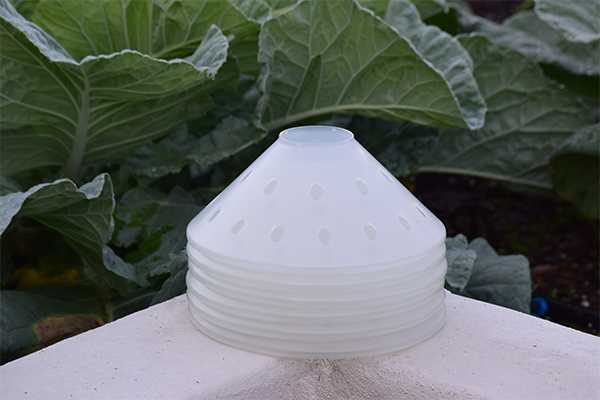Introduction
When you think of weeds, your first thought might be to pull them up and toss them out. But before you do, it’s worth knowing that some of these seemingly pesky plants have impressive medicinal benefits.
Many of the weeds that pop up in your garden aren’t just nuisances; they’re also powerful natural remedies that have been used for centuries. Let’s explore a few of these common weeds, starting with ribwort plantain, and discover how they can be more helpful than you might think.
Important: be sure to properly identify each plant and consult with a healthcare professional before using them medicinally.
Table of Content
- Ribwort Plantain
- Dandelion
- Stinging Nettle
- Yarrow
- Chickweed
- Purple Deadnettle
- Ground Ivy
- Burdock
- Conclusion
Ribwort Plantain (Plantago lanceolata)

Ribwort plantain is a weed you’ve likely seen growing in your garden or along the roadside. It’s easily recognized by its narrow, lance-shaped leaves and prominent parallel veins. While it might not stand out at first glance, ribwort plantain is a powerhouse of medicinal properties.
For centuries, this plant has been used to heal wounds. The leaves contain allantoin, a compound that promotes cell regeneration and speeds up the healing process for cuts, scrapes, and insect bites. Ribwort plantain is also a natural expectorant, making it an excellent remedy for coughs and bronchitis. You can brew the dried leaves into a tea to help soothe the respiratory tract or crush fresh leaves and apply them directly to wounds as a poultice.
Dandelion (Taraxacum officinale)

Dandelions are ubiquitous, with their bright yellow flowers and jagged leaves appearing in lawns everywhere. But far from just being a weed, dandelions are packed with health benefits.
The roots of the dandelion are especially valuable for digestive health. They act as a mild laxative and promote bile production, which aids in digestion. Dandelion root is also known for supporting liver health and helping the body detoxify. Additionally, its anti-inflammatory properties make it a useful remedy for conditions like arthritis.
If you’re curious about trying dandelion, the roots can be roasted and used as a coffee substitute, while the leaves can be added to salads or brewed into a tea.
Stinging Nettle (Urtica dioica)

Stinging nettle is another weed you might avoid due to its prickly nature, but it has a lot to offer once you get past those tiny stinging hairs.
Nettle has strong anti-inflammatory properties, making it a popular remedy for joint pain and arthritis. It’s also traditionally used to combat allergies, especially hay fever, due to its antihistamine effects. On top of that, nettle is rich in nutrients like vitamins A, C, and K, and minerals such as iron and calcium, which can help boost your overall health.
Remember to cook or dry the leaves before using them to neutralize the sting. Nettle can be added to soups, made into tea, or eaten as a cooked green vegetable.
Yarrow (Achillea millefolium)

Yarrow is another plant that’s often overlooked. It’s hardy and grows just about anywhere, with feathery leaves and clusters of small white or pink flowers.
Yarrow has long been valued for its wound-healing properties. It’s astringent, which means it helps stop bleeding and speeds up the healing of cuts and abrasions. Yarrow is also known for inducing sweating, which can help reduce fevers. Plus, if you’re dealing with digestive issues, a cup of yarrow tea might ease indigestion and cramps.
The leaves and flowers can be dried and used for tea, or the fresh plant can be applied directly to wounds as a poultice.
Chickweed (Stellaria media)

Chickweed is a low-growing plant with small, star-shaped white flowers and delicate leaves, often found in gardens, fields, and even cracks in the pavement. Though it may seem unassuming, chickweed is loaded with nutrients and has been a staple in traditional medicine for its skin-soothing properties.
This plant is particularly effective for treating skin conditions like eczema, rashes, and minor burns, thanks to its anti-inflammatory compounds. Chickweed can be applied as a poultice by crushing the fresh leaves and placing them directly on the affected area.
Beyond its topical uses, chickweed is also edible and rich in vitamins C, iron, and magnesium, making it a nutritious addition to salads, sandwiches, or smoothies.
Purple Deadnettle (Lamium purpureum)

Purple deadnettle might sound ominous, but it’s a member of the mint family and far from being “dead.” This weed is easily identified by its square stems, purple-tinged leaves, and small pink flowers.
Purple deadnettle is highly valued for its anti-inflammatory and antibacterial properties, often used to treat minor wounds, cuts, and infections. The leaves can be crushed and applied to the skin to promote healing, and some people use the plant to make a tea that helps with seasonal allergies and sinus congestion.
You can also eat purple dead-nettle—the young leaves and flowers have a mild, slightly sweet flavor, making them a nice addition to salads or as a garnish.
Ground Ivy (Glechoma hederacea)

Ground ivy, also known as creeping Charlie, is a fast-spreading perennial with scalloped, kidney-shaped leaves and tiny blue-violet flowers. Though often seen as a troublesome lawn weed, it has a long history of medicinal use.
Ground ivy is particularly effective for respiratory issues. Its expectorant properties help clear mucus from the lungs, making it useful for treating colds, bronchitis, and sinus infections. Traditionally, ground ivy tea was a popular remedy for soothing coughs and respiratory discomfort.
It also has anti-inflammatory and astringent properties, which can help reduce swelling and heal minor wounds when applied topically.
Burdock (Arctium lappa)

Burdock is best known for its large, heart-shaped leaves and burred seed heads that stick to clothing and fur. While it’s often considered a nuisance, burdock root has been used in traditional medicine for its detoxifying and blood-purifying properties.
Burdock root is particularly well-known for supporting liver health and cleansing the blood by removing toxins. It’s also rich in antioxidants and has been used to treat skin conditions like acne, eczema, and psoriasis.
The root is usually harvested in its first year of growth and can be consumed in various ways. It can be boiled and eaten as a vegetable, added to soups and stews, or dried and used to make tea.
Conclusion
Next time you’re out in the garden, take a moment to appreciate the weeds you might usually pull up without a second thought. Plants like ribwort plantain, dandelion, stinging nettle, and yarrow have been used for generations to treat a variety of ailments. While they may be a nuisance in your garden, these plants offer a natural way to support your health.
Reminder to be sure to properly identify each plant and consult with a healthcare professional before using them medicinally, especially if you have any health conditions or are on medication.










